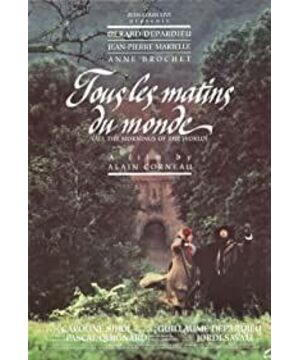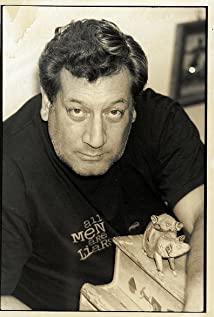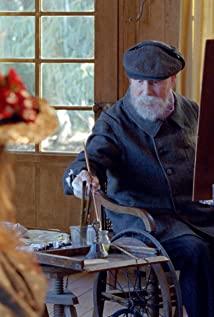[Tous Les Matins du Monde-OST]
("Let the Sorrow End at Sunrise" or "Every Morning in the World")
Director: Alain Corneau
Scenario & Dialog: Pascal Quignard
Images: Yves Angelo
Music: Sainte-Colombe , Marin Marais, Lully, Couperin, contucted and played by Jordi Savall
Prod.: Jean-Louis Livi
Cast: Jean-Pierre Marielle (M. de Sainte-Colombe), Gérard Depardieu (Marin Marais), Anne Brochet (Madeleine), Guillaume Depardieu (Marais jeune), Caroline Sihol (Mme de Sainte-Colombe), Michel Bouquet (Baugin) is
a story about the 17th-century French bassist master Colombe and his disciple Malays.
In addition to being deeply impressed by Colombe's affection and Malays' ingratitude, those who have seen it must not forget the deep and low voice of the ancient cello.
In addition to the melodies written by Colombe and Malays for the bass violoncello at the time, the film also includes music written by the famous French composers Luly and Coupland.
Jordi Favall, the soloist, is the authority on double bass. His performance is solemn and elegant, and he fully grasps the atmosphere of the music. The recording was performed by the famous sound engineer Pierre Verany, with first-class musical instrument texture and sense of space.
Won two awards including "Best Music" and "Best Sound Effect" at the French Film Caesar Awards.
The original Baska.
"Every Morning in the World" (Tous les Matins du Monde) created by Ji Nie Pascal Quignard in 1991.
Search II:
stories of people mentioned in the
Lully. Italian-French composer. Born in a wealthy miller family in Florence in 1632. He entered the French court at the age of 10 and began his artistic career. Lu Li has many talents. He served as a ballet actor and violinist, and later became a band conductor, and composed ballets for the royal family. In 1652, he was ordered to arrange "Ballet Tonight" for the Palace Carnival. The whole performance was magnificent and magnificent, and Louis XIV was invited to appear on the stage as the sun god. Therefore, he became the favorite of Louis XIV and was appointed as the "court dancer and musician", and has dominated the music of the French court ever since. Between 1664-1671, he collaborated with the dramatist Molière to create more than ten dance dramas and musical comedies, which laid the foundation for the formation of French opera. In 1672, he became the dean of the Royal Academy of Dance and trained many dancing talents.
Lu Li is a representative figure of French Baroque music. He founded the French National Opera School, whose style focuses on dance, the scene is gorgeous, and the singing fully demonstrates the elegant rhythm of French, creating the slow-fast-slow form of French overture. In the dance, the elements of Italian impromptu comedy were incorporated into French ballets, forming a new form of ballet called "Intermission Ballet". Its representative operas include "Alceste", "Daisai", "Armide" (Armide), "Isis", "Amadis", etc.; dance dramas include: "Aristocratic Fan" (La Bourgeois Gentilhomme), "Forced Marriage" (both in collaboration with Molière), etc. In addition, there are a lot of fun music, songs, church music and other genres of music.
Marin Marais
Marin Marais (1656-1728)
French composer and violoncello player. Born in Paris on May 31, 1656. He lived in Paris all his life, and most of his life was in the service of Louis XIV. When he was a teenager, he worked as a singer in the church of St. Germaine-l'Auxerrois. After changing his voice, he studied with the mysterious artist and Violgen master Monsieur Sainte Columbe (Monsieur Sainte Columbe). Viol of the month (viol). In 1676 he returned to the Palace of Versailles to serve the royal family and was appointed as the Royal Violist (Ordinaire de la chambre du Roi pour la viole). After that, he studied composition with Lu Li at the Palace of Versailles and composed four operas during this period. He served at the Palace of Versailles until his retirement in 1725. His position is inherited by his son Vincent. He has 19 children, many of whom are famous for music.
Marais died in Paris on August 15, 1728.
Marais is a prolific composer who has created a large number of Violgen works, and most of his important works are collected in a collection of five works published between 1686-1725. Including 550 works, creative and novel, diverse and full of artistic interest.
The story between him and his teacher Columbus was made into a movie called "Every Morning in the Earth" (Tous Les Martins du Monde).
Works:
Alcyone, opera "Acciana"
STIL 1405 SAN 81 Sechet /Dancehall and Laughter Ensemble (selection, minuet, Menuet)
Le Badinage, scherzo
Astrée E 8833 Monteje
Suite en mi mineur, in E minor suite
Astrée E 8833 Fitzwilliam Orchestra (selected, Rondo)
and the key figure Monsieur Sainte Columbe has very little information.
Musicologists know very little about Monsieur de Sainte Colombe (he is called "monsieur" because his christian name is not known) and it is indeed difficult to find to find any details about him.This is certainly due to his modesty which distanced him from honours and to his totally intimate conception of the musical art.
One of the most renowned viol players of his time,he wrote a number of works for bass viol which have contributed to its revival in modern times.We know in bits and pieces some information about him, and in particular that he added a seventh string to the instrumen, giving it greater fullness of sound and greater potential for contrast.
It was an anecdote reported by Titon duTillet presenting one aspect of thr master-pupil relationship linking Sainte Colombe and Marin Marais which served as a starting point for the scenario of Pascal Quignard.
We know that he was jealous of his art, but some commentaries taken Also the Specify that OTHER writings from of He WAS A Great amateur at The Music of Time and of His-ON Occasions Arranged Concerts in His-own Salons.
FM:
http://www.musicolog.com/colombe.asp
search three:
Viol (Italian: Viola da gamba, French: viole, English: viol) was finalized as early as the early 16th century, and it spread in Italy and Spain in the courts and civil society. Until the middle of the eighteenth century, it was a fairly common bass stringed instrument throughout Europe. This kind of instrument generally has six strings, namely D, G, c, e, a, d1 string. It is basically a four-degree tuning, of course, the third and fourth strings are also one of the characteristics. Around the seventeenth century, this instrument began to become popular in France. Before that, the Viol piano only existed as one of the general bass instruments. After the Violqin became popular in the French court and among the people, considerable changes have taken place in addition to the musical instrument itself. In addition to the physical changes, due to the efforts of the French performers, the original six-stringed Viols produced a seven-stringed Viols with a larger range and richer sound quality. This seventh string is the lowest string 1A. Although there is no complete basis, scholars still believe that the famous French Violence player, composer Colombe (Sainte Colombe), Marin Marais (Marin Marais), Fukler (Antoine Forqueray), etc. This development of Violgen played a decisive role. At the same time, thanks to the great efforts of these famous French composers of Viol, Viol has gradually become a very popular melody (solo) instrument. Later in the British Isles, both the court and the folk Viols also occupied a very dazzling position in solo works. Coincidentally, the entire Violian active era is about the entire Baroque era known as classical music. As for why Violgen suddenly disappeared from the stage, there are many reasons, and there are different disputes in academia. However, the relationship between the sound quality and spatial acoustics of the Viol piano itself and the sociality of classical music (which should be a matter of the sociology of music) is also one of the reasons that cannot be ignored. ……For example, the space for music performance has gradually become huge. It turned out that the musical instruments played in the small spaces of the court and aristocratic halls have obviously become unsuitable in terms of volume when they reach the large concert halls required by the civic culture. There are many such instruments, including Viol. ……When music has moved into the society and become a state that ordinary citizens can appreciate, the music environment has undergone tremendous changes, and some musical instruments have gradually withdrawn from the stage and disappeared...
The history of the cello can be traced back to the end of the 16th century. It is a 15th century musical instrument called "Bass Viol" or "Knee Viol". The Violian is not as big as a cello, and its arc is not so obvious, but it can be played between the knees and played with a bow like a cello.
The cello was originally spelled Violoncello in Italian, and later became abbreviated as Cello. The cello is known for its warm and rich timbre, and is one of the most common instruments in a symphony orchestra. Suitable for various roles: Sometimes joining the bass camp, sighing in the low voice; sometimes using the middle two strings to play the role of the rhythm backbone.
Violian viol (swept from "Concise Encyclopedia Britannica")
bowed stringed instrument, mainly used in chamber music from the 16th to the 18th century. The tuning is two fourths, one major third, and two fourths. The neck has a bottom string made of casing, which is set to d, G (or A) and D respectively. Later, in addition to these models, a Violone was added. The tuning is often octave lower than the bass Viol. The characteristic of the Viol is that the shoulders are tilted; the sides are wide and the back is thin and flat; when playing, it is upright. To play the violin, put the bottom of the violin on your lap or between your legs, so it is also called knee-hold Viol. The bridge bends slightly to increase the width so that the bow can contact each string separately. In the 17th century, the instrumental music creation style emphasized the sound of human voice in the high range. Due to the rise of the violin, the midrange and high-pitched Viols tended to decline. By the end of the 17th century, this-normal type bass Viol was used in instrumental music of the Baroque period. In the 18th century, the bass Violian solo continued to be popular in Germany and France, especially in France, it even added a seventh bass string, which was set to A'. When the composer created a complete upper part harmony in a relatively new classical style, the Viol piano was completely abandoned. In the 20th century, in order to play music from the Renaissance and Baroque periods, Viol was successfully revived.
For baroque music in the era of Louis XIV, you can also refer to "The king is dancing" (The king is dancing)
View more about Tous les matins du monde reviews











